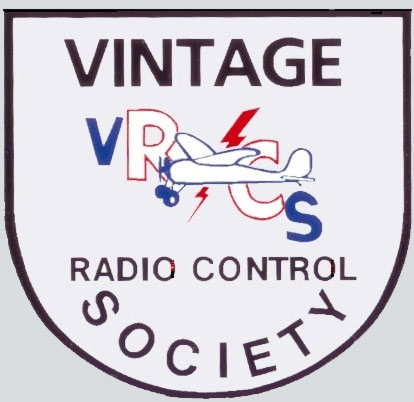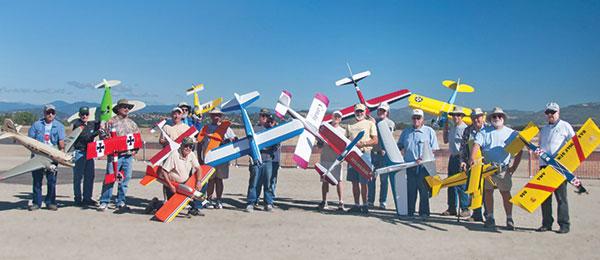Written by Bob Noll and Bruce Tharpe
Events from coast to coast
As seen in the June 2017 issue of Model Aviation.
Image

VRCS is offering new incentives for events!
The Vintage RC Society (VRCS) is encouraging RC clubs across the country to hold more VRCS events by offering a brand-new incentive program. These incentives include reimbursing the clubs for expenses such as awards and prizes, giving the organizations $100 per day for each day of their events, and reimbursing the clubs’ AMA sanctioning fees. These fees range from $2 to $25, depending on the type of event. The 2017 VRCS Event Sponsorship Program was created as a way to thank clubs for hosting events by adding funds to their coffers. To qualify for the program, organizations must have flying activities in all four VRCS flight categories: Open, Concours d’Elegance, Pattern, and Scale. A discounted entry fee must be offered to all VRCS members who wish to participate. The AMA-sanctioned events have to appear in the AMA Sanctioned Event Calendar in Model Aviation magazine, and all advertising for the events must feature the VRCS logo. In exchange, VRCS will reimburse the clubs for the cost to run a large advertisement for two months in Model Aviation. This cost is currently $45 per month. The VRCS offers three levels of sponsorship for clubs that host VRCS events: Level 1: $100 per event day. • Open category flying only. • No flying competition. Level 2: $100 per event day, plus $100 for awards and prizes. • Minimum of two VRCS flying categories (e.g., one competitive event). One class is sufficient in Pattern. • Trophies, awards and/or prizes for each competitive event. Level 3: $100 per event day, plus $200 for awards and prizes. • All VRCS flying categories (e.g., three competitive events). At least two Pattern classes are required. • Trophies, awards, and/or prizes for each competitive event. After each event has concluded, the Event Manager must send a report to the editor of Vintage Flier and to the VRCS treasurer. This information has to be turned in within one month of the event's conclusion. To be reimbursed for expenses and to receive a sponsorship, clubs must provide appropriate documentation to the VRCS treasurer. For more information about the VRCS flight categories and the event sponsorship program, visit www.vintagercsociety.org or contact VRCS President Bob Noll at (607) 754-5279 or [email protected].Events from coast to coast
The Vintage RC Society (VRCS) was born in 1989, initially as an idea by Bill Winter, resulting from discussions with Hal “Pappy” deBolt, about how the history of RC could be recorded and preserved. Further discussions involved Joe Beshar, John Worth, and Art Schroeder. This founding group quickly agreed that a newsletter would be needed to serve as a means of communication among interested parties and to provide the basis for historical documentation. With Joe Beshar’s prodding, Art Schroeder accepted the editorship responsibility for producing the newsletter, and John Worth agreed to serve as the initial president. Joe signed on as secretary-treasurer. The organization was informally established, with decisions made by unanimous agreement of the three officers.Image

Three historic Pattern models: (L-R) Bruce Tharpe’s Candy (designed by Cliff Weirick); Jim Lueken’s Taurus (designed by Ed Kazmirski); and Jim Spurlock’s Perigee (designed by Tom Brett). All have won the coveted Pilots’ Choice award in various years. Dunlap photo.
By the end of 1989, with 220 members, the “fly and tell” concept was established. The first reunion was scheduled on Labor Day weekend in 1990 at the airport in Selinsgrove, Pennsylvania, a site where earlier RC events had been held. Now, in 2017, VRCS hosts many events across the nation. Model aircraft that can be seen at VRCS events include those designed by Hal deBolt, Lew Andrews, Joe Bridi, Phil Kraft, Carl Goldberg, and many more RC pioneers (see table below). The most important requirements are that airplanes flown at VRCS events must have been designed for RC at least 35 years ago. They can either be built from kits or scratch-built from original plans. Modern engines and radios are acceptable and even encouraged. Notable Modelers and Some of Their Most Famous Designs Lou Andrews Aeromaster, Trainermaster, H-Ray Howard Bonner Smog Hog Tom Brett Apogee, Perigee, Nimbus, TBX-1 Joe Bridi Kaos Series, Dirty Birdy, Sun-Fli, RCM Trainers Ralph Brooke Crusader, Whistler Hal deBolt Live-Wire Series, Swiss Bipe, Viscount Karl-Heinz Dezin Telemaster Fred Dunn Astro Hog, Astro Bipe Joe Foster Patriot, DeNight Special Carl Goldberg Falcon 56, Skylark 56 Walt Good Guff, Rudder Bug Maxey Hester Zlin Akrobat, Stratus, Simco, Komet Ed Kazmirski Orion, Taurus, Tauri, Simla Jim Kirkland Beach Comber, Citron Phil Kraft Das Ugly Stik, Kwik Fli, Flea Fli Jess Krieser Sky Squire, Aero Commander 100 Don Lowe Phoenix Series Jim Martin Banshee Claude McCullough Kadet, Kougar, Yak 18 Don McGovern McGovern’s Monster, Sea Cat, Navigator Jerry Nelson Sultan, Pegasus, Qualifier Bill Northrop Big John, Apprentice Dave Platt Contender, Top-Flite WW II fighters Lou Proctor Antic, Antic Bipe, Nieuport 11 Dave Robelen Pipsqueak Art Schroeder Eyeball Doug Spreng Stormer Series, Twister Jack Stafford Chipmunk, B-25, Midget Mustang Jim Whitely Daddy Rabbit Ken Willard Top Dawg, Schoolboy, Headmaster Bill Winter Krackerjac, Rookie, Airknocker Nick Ziroli Eindecker E.III, Pitts Special, Waco N All of these model aircraft and hundreds more are VRCS-eligible designs. Let’s take a look at a couple of popular events that were held in early September 2016, on opposite sides of the country. Like all VRCS gatherings, both events have the commonality of seeing great vintage RC airplanes in the air and a lot of storytelling about those earlier days of RC.
Image

Beppe Fascione’s Das Ugly Stik is a 1966 Phil Kraft design. Phil designed the model to be a test bed for his radio system development. Jim Jensen kitted it and it became one of the largest-selling airplanes.
The Spirit of Selinsgrove
The original reunion that started in Selinsgrove, continued on Labor Day weekend for many years, then took a trip to Delaware before finding its present home in Endicott, New York. It is now hosted by the Aeroguidance Society of Endicott, one of the oldest RC clubs in the country. VRCS has named this reunion the Spirit of Selinsgrove to reflect the original gatherings of the society. It is now the longest-running event on the VRCS calendar.Image

Scott Wallace built this Joe Bridi-designed Warlord.
The bylaws of the VRCS encourage low-intensity competition in areas closely associated with the roots of RC. The founders recognized that some low-key competition would be good for the hobby and would show how well the earlier RC airplane designs would perform with the modern equipment that was on the market in the 1980s. To do this, the Spirit of Selinsgrove gathering includes Class I (rudder only), Class II (rudder and elevator), and Class III (rudder, elevator, and aileron) Aerobatics (Pattern) competition.
Image

The Aeromaster was designed and kitted by Lou Andrews in 1966 and became one of the most popular airplanes of that time. Jim Quinn built this Aeromaster and has converted it to electric power.
Throttle control is allowed and encouraged in all classes. VRCS also encourages Scale and Concours d’Elegance competition. The Concours d’Elegance event recognizes craftsmanship and airplanes built as closely as possible to the original design using materials consistent with the design period. Recognizing that many members do not want to enter any competition, open flying is also provided.
Image

Tim Panto flies his Class I Rumpus using electric power. Tim was the winner in Class I at the Spirit of Selinsgrove reunion.
For more information about the Spirit of Selinsgrove reunion, contact Bob Noll.
The Northwest VRCS Fly-In
Vintage RC is alive and well in southern Oregon! For two gorgeous days in early September, the Medford Rogue Eagles RC Club hosts the seventh annual Northwest VRCS Fly-In. This isn’t just a local club event. We have pilots from the surrounding area, some from the Portland area, and a few from California. Word is spreading among modelers about this gathering of vintage airplanes and our first-class flying site. The Northwest VRCS Fly-In is slightly different from the Spirit of Selinsgrove reunion because it focuses on open flying and has no flying competition. After a quick lineup of models for a Pilots’ Choice vote, the event settles into a pure fly-when-you-want, zero-pressure kind of reunion.Image

John Haffner’s Esquire was kitted in 1956 by Midwest Models. John flies his Esquire with only rudder and throttle control.
Vintage RC events tend to attract traditional model builders who have been at this game for a long time and still have a soft spot for the balsa models of their youth. For the first few years of this event, attendees mostly dragged out old models from their rafters that happened to qualify as vintage aircraft. Now we frequently see new models being built especially for this event. Every model that comes to a fly-in such as this has two stories—the historic story of the model design, and the nostalgic story of the builder/pilot. Of course, those stories lead to more stories and memories of wonderful times in the hobby! We expect to keep this event going—and hopefully growing—for years to come. Modelers up and down the West Coast are welcome to join us next year and revisit the pioneering days of RC flight.
Image

Perley Bowen campaigns with this 1964 Dick Allen-designed Stark Shark. It qualifies as a Class II and a Class III model.
For more information about the Northwest VRCS Fly-In, contact Bruce Tharpe. The Vintage RC Society is a Special Interest Group of the Academy of Model Aeronautics. Several sources exist for short kits of many vintage airplanes. A wonderful source of vintage aircraft plans is the AMA Plans Service. For more information about VRCS visit the society’s website. —Bob Noll [email protected] —Bruce Tharpe [email protected]










Comments
Model airplane disign, construction and flying
I would like to be in contact with other model airplane disigners, builders and flyers.
I started 61 years ago.
Started with Hand launch glides.
Add new comment